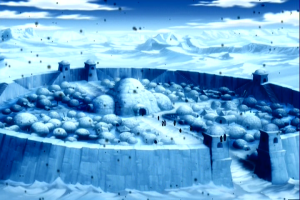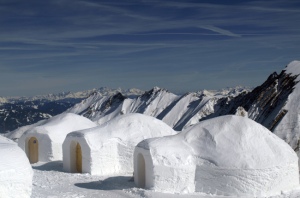When Avatar: The Last Airbender aired, it felt like the first time I had seen a predominately non-white cast outside of Japanese animation. Much of Avatar is inspired by Asia (mostly Korea, Japan and China) and the Inuits, and also exemplifies different styles of Chinese martial arts for each of the four elements. As an American animation, it was exciting to see so many characters of colors.
As Teah Abdullah states, “Not only did the cartoon have representation I could identify with, but it is also a great series where the characters are not based on stereotypes” – and I agree for the most part. The representation was what drew me to the series as well. However, Abdullah then compares herself with Aang and his lack of Asian stereotypes (glasses and small eyes). However, Aang’s larger eyes is partly due to his age. Younger characters have rounder faces and larger eyes. In addition, stereotypes are what helps an audience recognize what demographic the character is similar to.
Glancing at the character designs for the cast of Avatar, it’s clear that a majority of the cast have a darker skin tone and hair color due to an Asian-influenced character design. This is where M. Night Shyamalan’s film adaptation, The Last Airbender (2010), misses the ball.
In an interview with io9, Shyamalan mentioned that the greatest thing about anime is its ambiguity – that the characters are an intentional mix of all features. Which is where my agreement with Shyamalan ends. While the ambiguity is great, once again, stereotypes help develop character designs that then point towards specific ethnicities. Additionally, there are elements within the Avatar universe that help express its ethnic background.
For example, Katara and Sokka (both live action casts are white). The siblings live in the Southern Water Tribe at the South Pole – which resembles Earth’s artic regions. As a result, the Water Tribes largely resemble Inuit culture especially in the clothing and the igloos. So when Shyamalan uses ambiguity as a reason to cast any ethnicity for each of the tribes, I can’t help but wonder if he chose to ignore the cultural signs within the animation series.
But how does that explain the whitewashing and how the Fire Nation is Indian? According to Maryann Erigha’s peer-reviewed journal, the lack of diversity in media producers often results in underrepresentation of diversity on-screen. That is, there is a link between behind-the-scenes racial and cultural diversity and on-screen action. Often times, the “employment of women and racial/ethnic minorities behind-the-scenes positively impacted their quality of on-screen images”.
From Shyamalan’s casting we can see the behind-the-scenes affecting on-screen images (ie. the Fire Nation as Indian and background characters in the Water Tribe appearing to be Inuit) to a fault. The clear diversity and ethnic origins of each tribe is clearly ignored despite many signs within the character and set designs. As a result, it’s no wonder the film was a complete flop. The highlight of the animation series was its diverse cast, and the lack of was largely responsible for the negativity towards the film (amongst other things).
– Alison Chiu


Was there a lot of criticism of the film’s casting? Would have been good to link to some criticism. Also, this movie was just horrible, right?
LikeLike